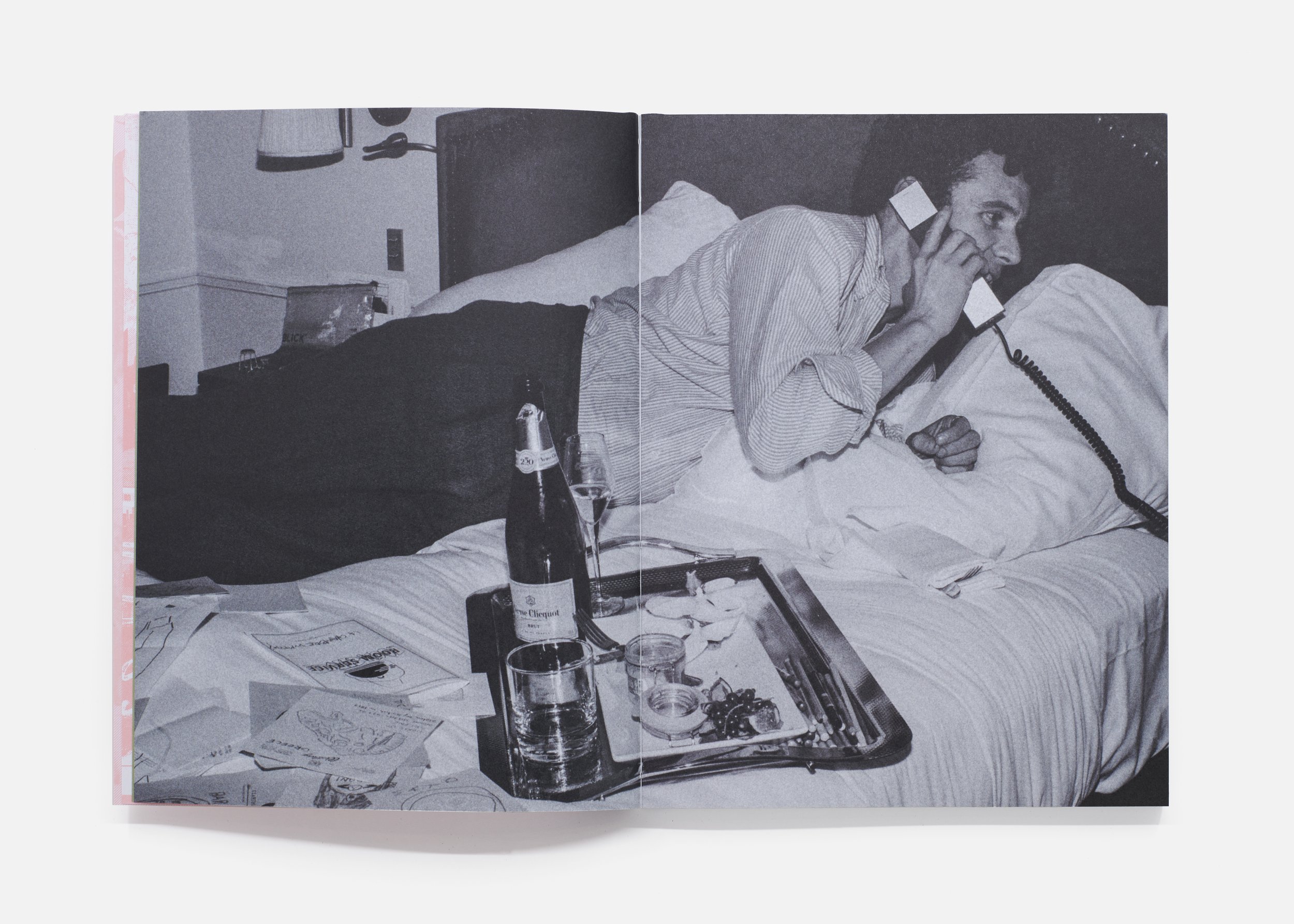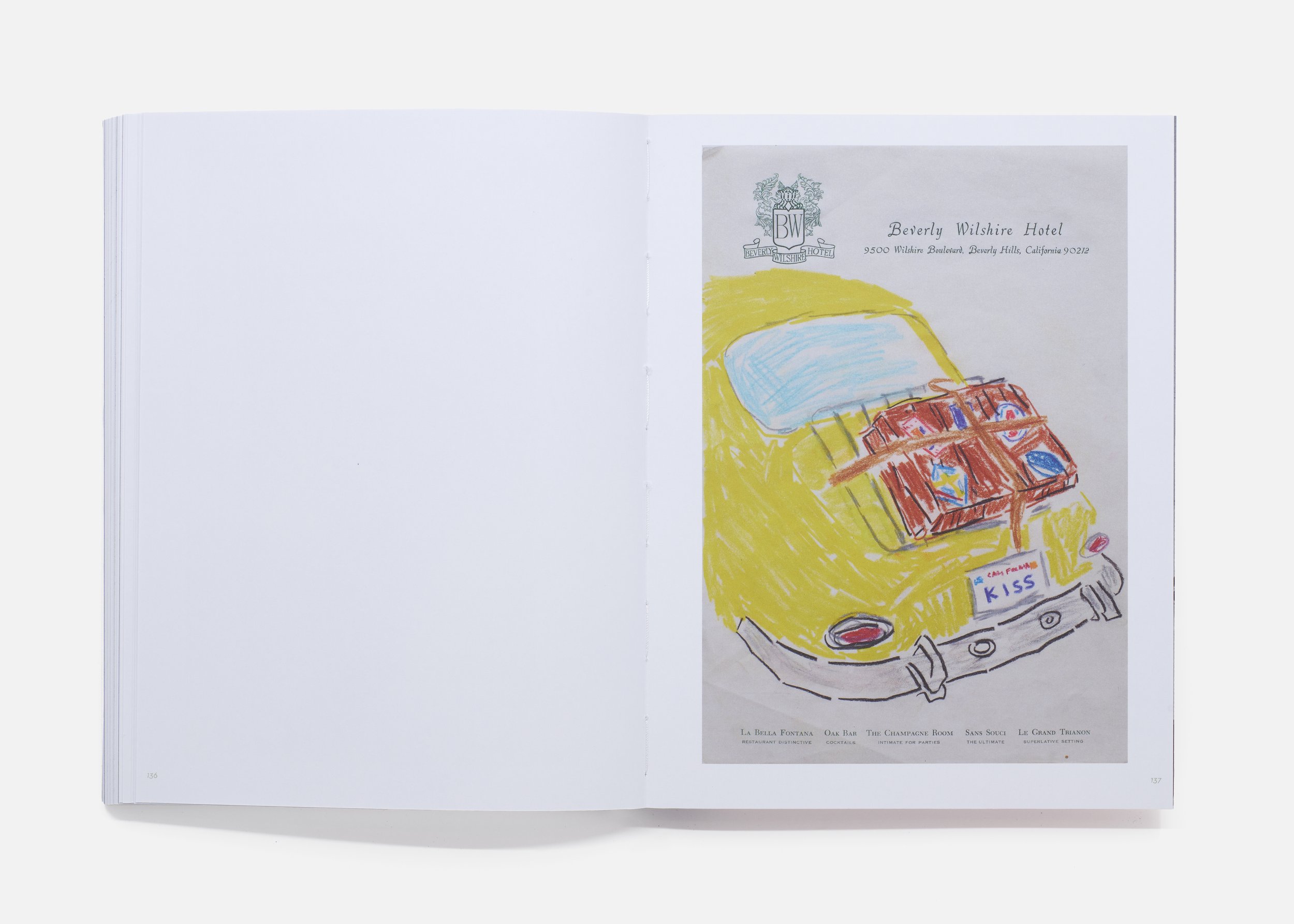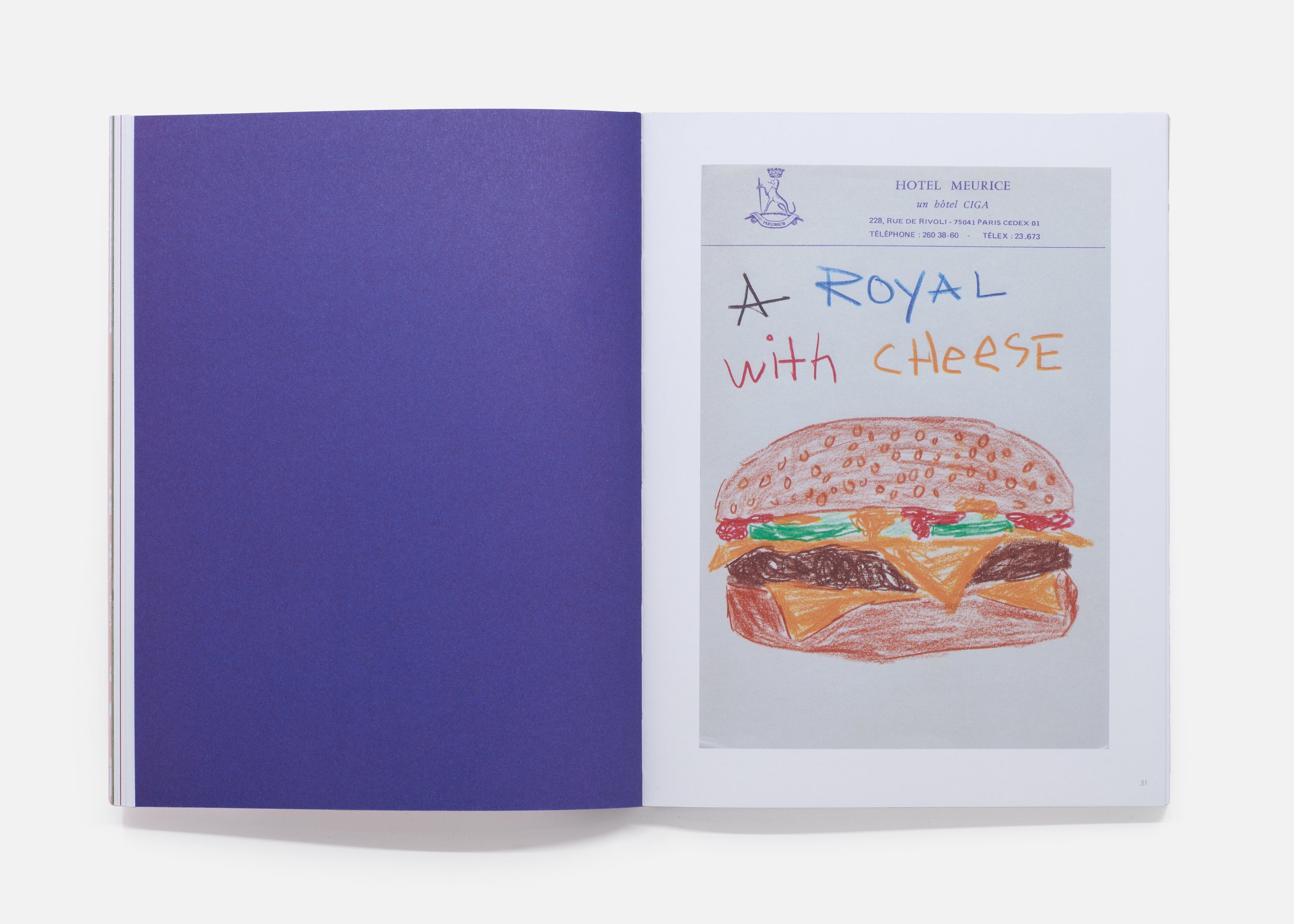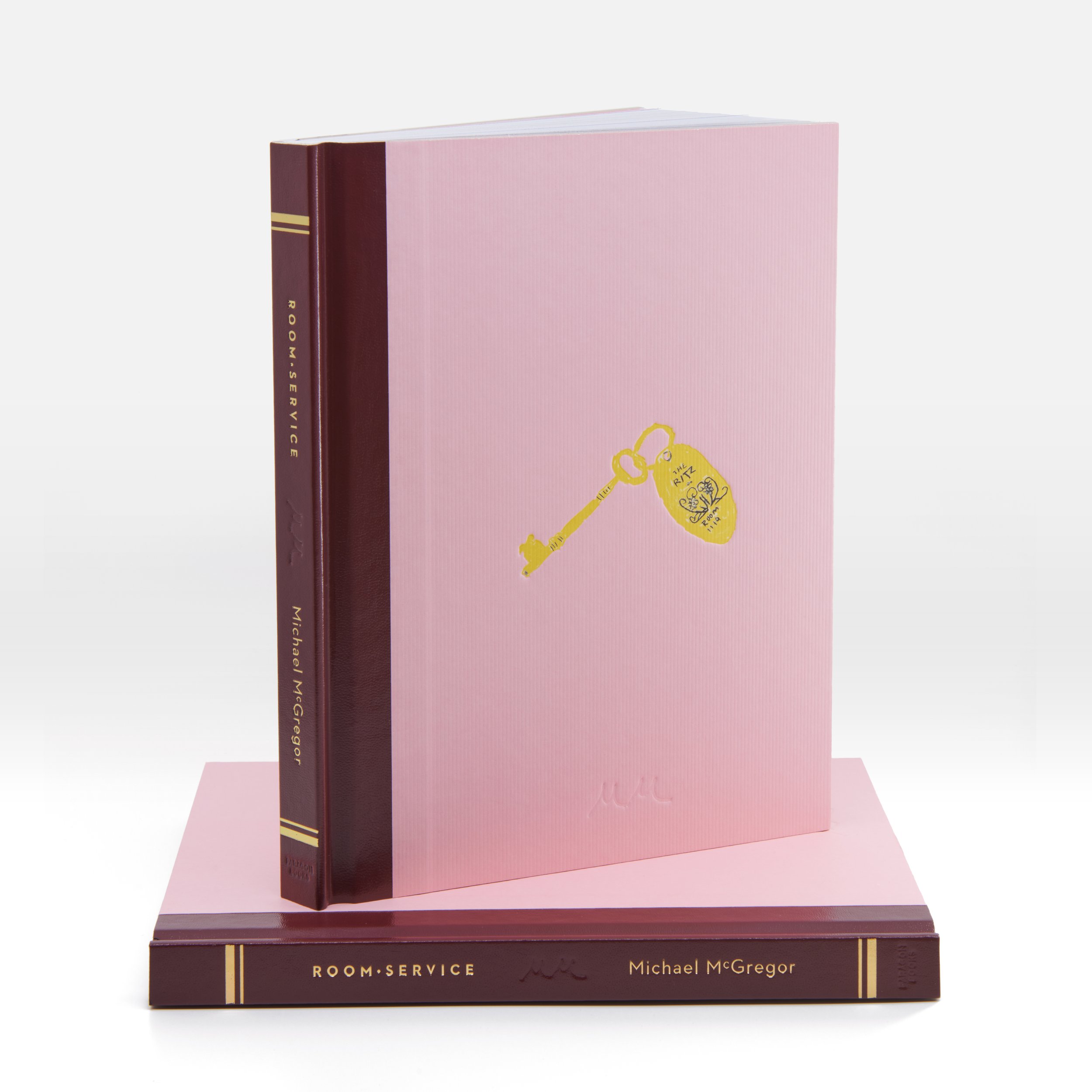michael mcgregor and the art of room service
michael mcgregor had a lightbulb moment when he started drawing on hotel stationery in 2016. at the time, he was living in mexico, traveling frantically, and somewhere along the way he started using stationary as his canvas. he was immediately drawn by the juxtaposition of designed logotype and naïf pastel pencil drawings. “they felt so opposite, but together they transformed into a different, new thing. plus, they easily fit into a small folder, making them easy to pack up and keep on the move.” mcgregor turned those drawings into a series featured in his latest book “room service” where his gestural drawings explore luxury, leisure, and travel, thus capturing and preserving small moments while roaming.
interview by philippe ghabayen
using hotel stationary as your canvas is one of those things one says, “oh, i wish i thought of it first”. this sort of diary of a glamorous life is brilliant in its simplicity, does your life imitate art?
it is hard to differentiate. much of my work is observational, experienced or imagined, taking inspiration from personal observations or my own internal imagination. life feeds art, and art feeds life. it is a cyclical thing. i am not the type of artist who wants to be in the studio 24/7. i would prefer to be in the streets, or at a cafe quietly observing, or watching a movie. of course there are times when i'm preparing an exhibition of paintings, usually after spending several months traveling, and then i never leave the studio, but the inspiration is constantly drawn from the months spent out observing how people live in different places. for better or worse, it’s essential to my process.
your paintings are very vivid, both in color and spirit. it is like you’re forever in touch with your inner child. how do you maintain such a fresh approach? what’s your secret?
in zen buddhism, there is a concept called “shosin”. it translates to a child's mind or a beginner's mind, which essentially describes an open perspective to the world, a curiosity that's free of preconceived notions of “how” and “why”. i have always felt a kinship toward this state of being. it's amazing what you encounter when you keep your eyes and heart open, have a curious mind and a sense of wonder. sometimes things as mundane as a jar of mayonnaise appear to be much more ravishing than one would expect.
the dolce vita life depicted in your paintings is very coveted. it’s what everyone thinks they want in a way, but we love how you oscillate between ultra-glamorous and punk. tell us more about those specific moments in the stories you’re presenting so accurately.
i'm always attracted to the intersection of high/low cultures. i grew up in and around the diy music scene, which for me has always meant, if you can dream it, you can do it. you don't need technical know-how, expensive instruments or tools. you rely more on spirit and ingenuity. this was one of the guiding lights of punk, specifically of a band like the clash, or crass, who took it to a new level.
people do think they want la dolce vita. it’s constantly being sold to us, by luxury brands, by vogue, and the blistering onslaught of images thrust upon us on a daily basis, but people are also really satisfied with simple things, like a cheeseburger. the cheeseburger is probably more nourishing, spiritually and psychologically, than a birkin bag.
what are some art movements that have inspired you? what still moves you when you go to a museum?
the fauvists and nabis, which are almost one, depending on who you ask. also, the post impressionists, people like bonnard; naive artists or southern folk artists like bill traylor and thornton dial inspire me. the way they can reduce a picture to its essence and inject so much life into a work, in simple marks, is fascinating.
on the more contemporary side of things, I often gravitate toward work from the pictures generation. artists like louise lawler, richard prince and david salle come to my mind. their work explores the reproduction of images and mass media. there was a louise lawler retrospect at moma in 2016 that really blew me away. it's an exhibit i think about all the time when it comes to making pictures and the way pictures exist in our world.
“i had a strange moment, alone in the matisse museum in nice last year, where I started weeping while looking at “still life with pomegranate” (1947). it is not a particularly emotional painting, in the least, but something in that moment hit me, and it felt so fresh, so vibrant and full of life in the mid-day côte d’azur light, only seconds away from the regina, where matisse lived and painted toward the end of his life.”
the warhol references aren’t lost on the viewer. do you view it more as a nod to the artist, or is it purely accidental?
warhol was probably the first contemporary artist i encountered, as a kid growing up in new jersey, in the suburbs of manhattan. I vividly remember going to an exhibit, probably in 1996, at the moma, with my 7th grade art class, and writing a paper on his liz taylor paintings. i had the velvet underground and nico album around the same time. in the 80s and 90s, his figure, and ghost, were omnipresent in new york media.
anytime i draw a commercial object, particularly heinz ketchup, hellmann's mayo or coca cola, i think about warhol. i think about reducing the image to its most basic form, one that abstracts reality, but retains the personal relationship through an ephemeral quality. it is about memory, consumer culture, and conjuring something from the past for the viewer. andy made campbell's soup a celebrity. i am more interested in what these objects conjure to the viewer than trying to put my own specific thoughts or views on the object. it is more about tapping into the senses, memory specifically. as a kid growing up in the 80s, the language of consumer culture really shaped my perspective, and warhol reshaped that point of view through his work.
what’s the most iconic hotel you’ve been to and why?
it is so hard to say. at the end of the day, if a hotel has a good robe and a good burger available via room service after midnight (this is key, so many places mess this up!), then it suits me perfectly.
hotels have this electric energy. they are fast-moving yet nostalgic, transient yet everlasting. the french artist sophie calle encapsulated that perfectly in her “hotels” series. what fascinates you about these places? do you believe in energy transference?
there is absolutely an energy transference that happens in a hotel; it is built on ephemeral qualities. no one is there forever, except maybe the ghosts at the chateau marmont. discretion is key. you never know who is staying next to you or down the hall. you can be anyone or anything you desire in a hotel. you can just even lock the door and hide. calle’s work absolutely speaks to that. the transient nature, the mystery of the guests, and her observations of what was happening in these rooms she was recording in and photographing.
old establishments or new modern ones?
always old. i prefer places where generations mix, where grandparents congregate, but might run into their grandkids or children of their friends. i like going to new places run by friends, but they feel more like cheers, a place where everybody knows your name, and in a sense, that makes it an old school establishment. i prefer warmth, in spirit, decor and comfort to austere design, no matter how beautiful it is.
“at the end of the day, if a hotel has a good robe and a good burger available via room service after midnight (this is key, so many places mess this up!), then it suits me perfectly.”
a lot of your work is inspired by your travels to greece. what do you find compelling about that part of the world?
living in los angeles, the end of western civilization, made me feel the need to go back to the beginning of western civilization. athens. the last few years i have been splitting my time between los angeles and greece. swinging between a city steeped in antiquity and a city that really desires the most new-new thing possible. being from the states, which is a very young country, it is fascinating to explore a place whose culture dates back further than one could imagine. a place where myth and history infiltrate every aspect of life. there is also the orange trees, the jasmine, the bougainvillea, the aegean… these elements that are also commonplace in california, yet the spirit of greece is much richer and more divine than california.
i keep a small pied-à-terre in athens, and I try to explore as much as possible, while also doing as little as possible, like just reading, swimming, walking, eating, drinking and sleeping. i will make a painting when i feel like it, but in greece, i tend to abide by henry miller’s mantra in colossus of maroussi: to vow to do as little work as possible, absorb as much as possible and let the work come naturally later.
new york or los angeles?
one of my requirements for life is living in a place with orange blossoms and jasmine. being able to walk home at night and smell the night blooming jasmine is the most beautiful thing I can imagine. it is los angeles all day, yet as far as cities are concerned, I would take paris or athens over new york or los angeles any day.
hockney or matisse?
impossible, but if you have to choose, it would be matisse. there would be no hockney without matisse. that's just the chronology of art history. matisse’s use of color, the rawness of his work, the flow of the paint, and the subtle reveal of under-drawings have always been a big influence. i love hockney. he is probably a more technically skilled painter, but matisse is matisse. i had a strange moment, alone in the matisse museum in nice last year, where I started weeping while looking at “still life with pomegranate” (1947). it is not a particularly emotional painting, in the least, but something in that moment hit me, and it felt so fresh, so vibrant and full of life in the mid-day côte d'azur light, only seconds away from the regina, where matisse lived and painted toward the end of his life. it was almost as if his spirit was lingering in the area.


















